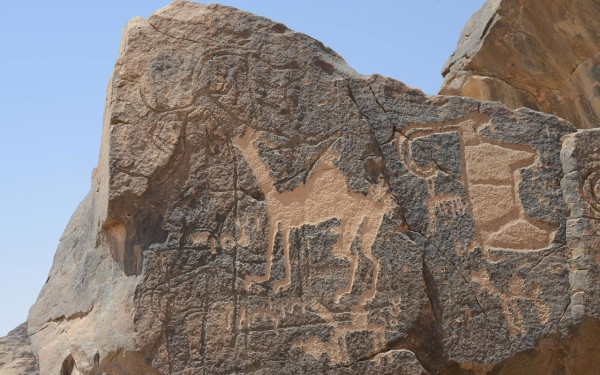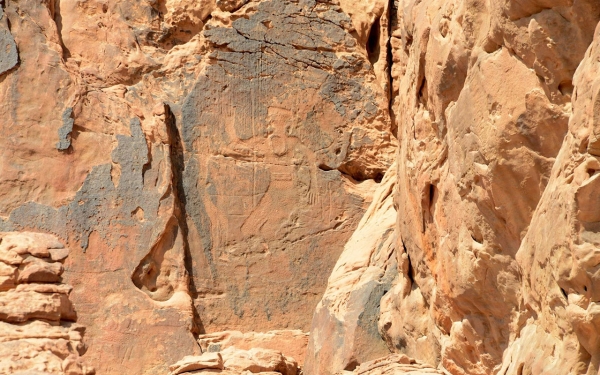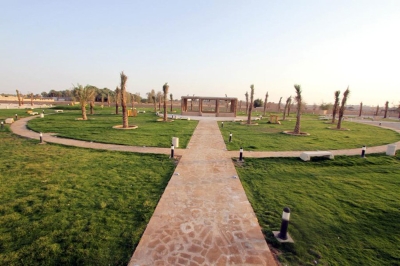


Al-Shuwaymis Antiquities are archaeological sites and rock engravings located in al-Shuwaymis Site in Hail Province, northern the Kingdom of Saudi Arabia, approximately 250 km southeast of Hail City. The rock engravings at this site are estimated to be about ten thousand years old BCE.
Significance of al-Shuwaymis Site
Al-Shuwaymis Site is considered one of the largest open-air rock art museums in the Arabian Peninsula and one of the world’s largest open-air natural history museums. It spans an area of approximately fifty km², featuring sandstone formations resting on an expansive volcanic field with craters and caves still under exploration. The site includes intricately carved friezes, one of which measures up to twelve m in length.
Activities, writings, and inscriptions at al-Shuwaymis antiquities
The engravings at al-Shuwaymis feature human and animal depictions in life-size and enlarged forms, including ostriches, camels, wild cattle, lions, leopards, ibex, gazelles, and mountain goats. The site also includes human figures, both individuals and groups, shown engaging in hunting, social, and religious activities. Additionally, inscriptions in the Ancient South Arabian script and Kufic script are present. These artistic expressions date back to three historical periods, the earliest from the Neolithic era and the latest from the early Islamic period.
Al-Shuwaymis antiquities in the World Heritage List
The rock faces of al-Shuwaymis are surrounded by archaeological sites that are distinctive to Hail Province, including Rata and al-Manjur Mountains. These rock engravings document environmental transformations in the Arabian Peninsula. In 2015, Rata and al-Manjur Mountains in al-Shuwaymis were inscribed on the World Heritage List by the United Nations Educational, Scientific, and Cultural Organization (UNESCO).
The rock art site in Hail was the fourth Saudi location to be inscribed on the UNESCO World Heritage List after Hijr in al-Ula Governorate, at-Turaif District in Diriyah, and Historic Jeddah It was later followed by al-Ahsa Oasis in 2018, Hima Cultural Area in Najran Province in 2022. Then, Uruq Bani Ma'arid Reserve was inscribed in 2023 as the Kingdom's first natural World Heritage Site. In 2024, 'the Cultural Landscape of al-Faw Archaeological Area,' located south of Riyadh Province, was declared a UNESCO World Heritage Site for its outstanding universal value to humanity.
Related quizzes
Related articles
